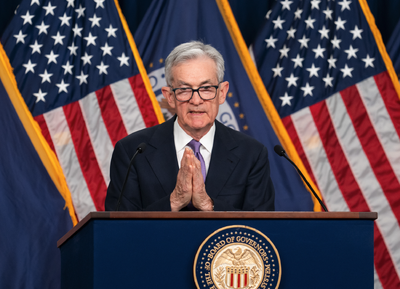The Federal Reserve announced on Wednesday its decision to maintain the key interest rate at its current level, a move aimed at combatting persistent inflationary pressures that are squeezing both American businesses and consumers.
In its most recent statement, released Wednesday, the central bank noted that economic activity has sustained robust expansion, with strong job gains and a consistently low unemployment rate. Despite some moderation in inflation over the past year, it remains elevated, albeit with modest progress towards the Committee’s 2% inflation target.
However, recent indications of a slowdown in price growth have led some economic experts to speculate about the possibility of a rate cut before the upcoming general election in November.
The Federal Reserve plays a critical role in managing inflation by controlling the federal funds rate, which in turn influences borrowing costs throughout the economy. Over the past year, the Fed has maintained this rate at around 5.5%, aiming to curb consumer demand for goods and services and thereby alleviate upward pressure on prices. Elevated interest rates have resulted in high annual percentage rates (APRs) on major credit cards, exceeding 20%, as reported by Bankrate, while mortgage and auto loan rates have begun at 7%.
These elevated borrowing costs may be having an effect, as evidenced by the Bureau of Labor Statistics’ report earlier on Wednesday, which indicated that year-on-year inflation stood at 3.3% in May, down from 3.5% in April and below analysts’ forecasts. Moreover, monthly inflation remained flat, marking the first such occurrence since July 2022.
Federal Reserve officials have indicated a reluctance to adjust the current rate level hastily, preferring to observe further positive developments in inflation data before considering a change. Neel Kashkari, president of the Federal Reserve Bank of Minneapolis, stressed the need for sustained positive inflation data before contemplating a reduction in interest rates.
However, Joe Brusuelas, chief economist at RSM accounting and consultancy group, anticipates that the downward trend in price growth will persist through the summer, potentially prompting a rate cut as early as autumn. He cited the Federal Reserve’s forecast, which suggests a September rate cut as inflation indicators inch closer to the Fed’s long-term 2% target.
Beyond inflation concerns, the U.S. economy is exhibiting signs of softening in other areas. James Knightley, chief international economist at ING financial services group, highlighted rising unemployment, currently at 4%, and slowing consumer spending as factors that could prompt the Fed to consider rate cuts.
The decision to maintain current interest rates comes amidst external pressures on the Federal Reserve to lower rates. Three U.S. senators led by Elizabeth Warren (D-Massachusetts) have called for rate cuts to alleviate housing and insurance costs, while Canada and the European Union have recently announced their own rate reductions.
Despite these external pressures, the Federal Reserve remains steadfast in its commitment to data-driven decision-making. As an independent central bank, it is unlikely to be swayed directly by outside influences. Economic analysts anticipate that continued signs of economic moderation, particularly in inflation, will bolster expectations for a rate cut in September, with subsequent incremental cuts likely thereafter.

